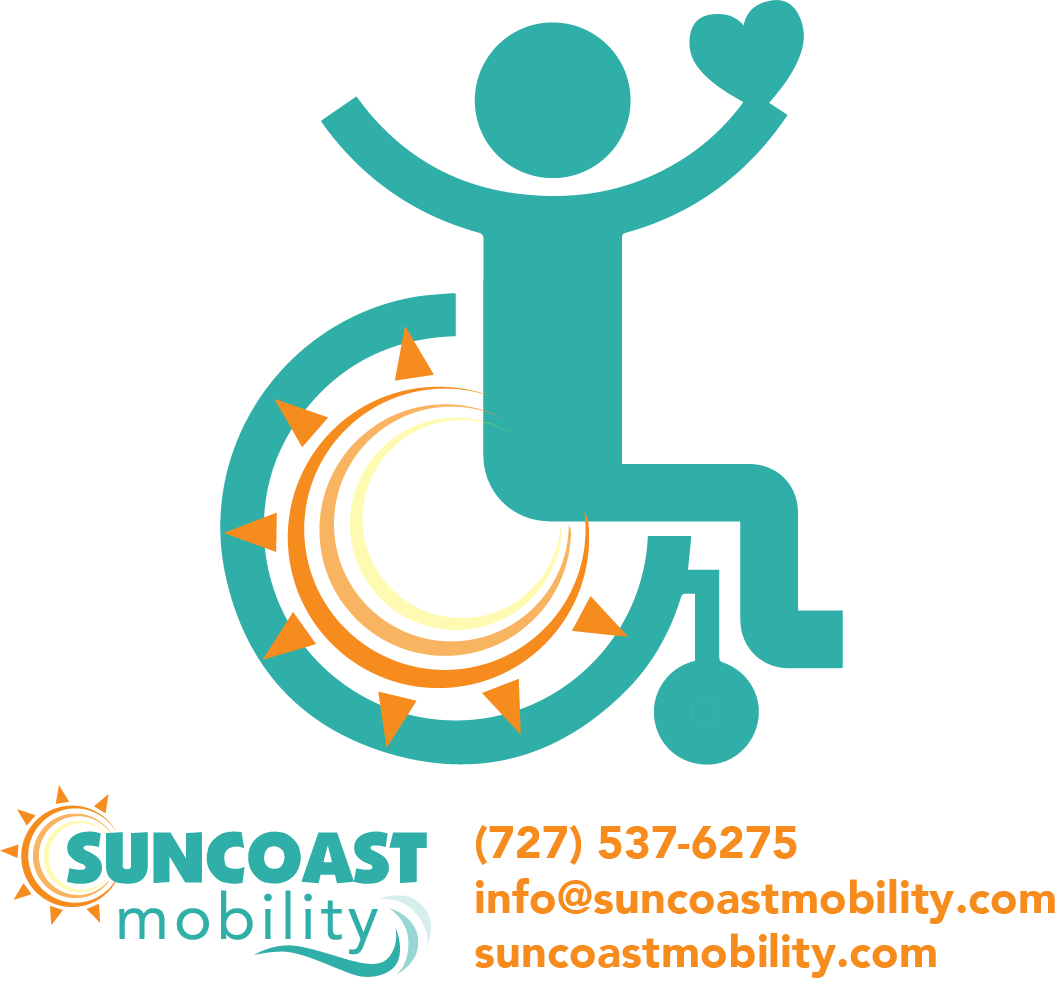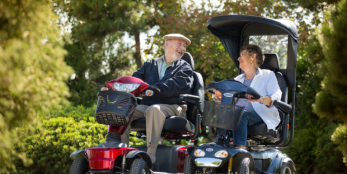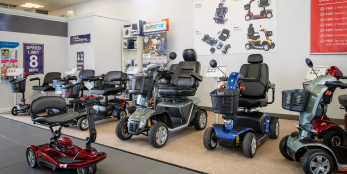Table of contents
A Comprehensive Guide to Different Types of Mobility Scooters
Mobility scooters have become essential tools for individuals who need assistance with moving from one place to another due to health conditions, age-related issues, or temporary physical limitations. These scooters help enhance independence, mobility, and quality of life, allowing users to maintain a sense of freedom, whether indoors or outdoors. However, choosing the right mobility scooter can be challenging due to the wide variety of options available in the market. To assist in this decision-making process, it is important to understand the different types of mobility scooters, their features, and the benefits each one provides. Below is a detailed breakdown of the most common types of mobility scooters:
1. Travel Scooters
Travel scooters are typically smaller, lighter, and more compact than other types of mobility scooters. These scooters are designed for easy transport, portability, and storage. If you need a scooter that is convenient for traveling, whether for trips around the neighborhood or to different destinations, a travel scooter is a great option. The primary selling point of these scooters is their ability to be disassembled into smaller, manageable components. This disassembly allows users to store the scooter in the trunk of most vehicles, which makes it ideal for individuals who travel frequently or need a scooter that can be easily transported.
In terms of performance, travel scooters are designed to provide a comfortable ride for short distances. The typical range on a full battery charge is between 8 to 10 miles, which is sufficient for daily errands like grocery shopping or short recreational outings. While they may not be the best option for long-distance travel, their portability makes them perfect for people who want to remain mobile while managing their storage and transport needs. Travel scooters are usually designed with simple controls, making them easy to operate for first-time scooter users.
2. Foldable Scooters
Foldable scooters offer a great compromise between the portability of travel scooters and the stability of larger models. These scooters are particularly beneficial for users who need a compact mobility solution that can be folded down for easy storage and transportation. Many foldable scooters come with an intuitive folding mechanism that allows the scooter to collapse into a smaller form. This feature makes them convenient for individuals who want a scooter that can be stored in a car trunk, closet, or other small spaces.
When purchasing a foldable scooter, it is important to consider the weight of the scooter and its heaviest component, especially if the user intends to lift the scooter on their own. Foldable scooters often feature solid tires that provide a smooth and steady ride on a variety of surfaces. They also tend to offer adequate comfort, but it’s important to ensure the seat and handlebars are adjustable to meet the user's specific needs. Like travel scooters, foldable models are typically better suited for short trips or errands. However, they provide the added benefit of being easy to carry, which can be particularly useful for individuals who live in apartments or need to transport their scooters frequently.
3. Large Scooters
Large mobility scooters are designed for individuals who require extra space for comfort, stability, and support. These scooters tend to be larger, heavier, and more powerful than their smaller counterparts, offering increased battery life and more comfortable seating options. If a user has specific needs such as wider hips, longer legs, or needs more support during their ride, large scooters provide an excellent option. These scooters often come with larger, more comfortable seats, wider footrests, and the ability to adjust various features to provide a tailored experience.
One of the standout features of large scooters is their extended battery life, often offering a range of up to 40 miles on a single charge. This makes large scooters perfect for users who need to travel long distances, whether for daily commuting or outdoor recreation. Large scooters typically have four wheels, providing superior stability and balance, especially on uneven surfaces. The added stability makes them ideal for individuals who need a scooter that can handle both smooth and rough terrain. Additionally, the weight capacity of these scooters tends to be higher, accommodating a wider range of users. However, users should always check the weight limit to ensure they do not exceed the scooter's recommended capacity, as this could negatively impact performance and safety.
4. Heavy-Duty Scooters / Recreational Scooters
Heavy-duty scooters are the most robust and durable type of mobility scooter available. These scooters are built to withstand significant weight and challenging terrains. They typically have larger tires, a powerful motor, and a higher ground clearance to navigate uneven paths, gravel, grass, and other outdoor surfaces. Heavy-duty scooters are ideal for individuals who require a more rugged scooter for daily outdoor use or who want a scooter capable of handling the challenges posed by rough roads or off-road environments.
These scooters are designed for extended travel, with a range that can surpass 40 miles on a single charge, depending on the model. Their powerful motors enable them to travel on inclines and across difficult terrain without compromising on speed or reliability. Many heavy-duty scooters also feature suspension systems that offer a smoother ride over rough surfaces. The increased ground clearance provides more stability and makes these scooters more versatile. Individuals who enjoy outdoor adventures, gardening, or need to traverse large outdoor spaces will benefit greatly from a heavy-duty scooter.
5. Three-Wheel Scooters vs. Four-Wheel Scooters
One of the key decisions when choosing a mobility scooter is whether to go for a 3-wheel or 4-wheel scooter. Both types have distinct advantages depending on the user's needs and preferences.
4-Wheel Scooters
4-wheel scooters are generally regarded as the most stable type of mobility scooter. The extra wheel provides superior balance and support, making them ideal for users who need a higher level of stability. They are particularly well-suited for outdoor use, offering better traction and safety when navigating uneven terrains. The four-wheel configuration is great for individuals who prioritize security and comfort, as it minimizes the risk of tipping over, especially on inclines or rocky surfaces. However, some users with longer legs may find that the front fender of a 4-wheel scooter limits their legroom, making them less comfortable for extended use.
3-Wheel Scooters
3-wheel scooters, on the other hand, are more maneuverable and are often preferred by users who need to navigate tight spaces, such as narrow aisles or crowded areas. The single front wheel allows for tighter turns and smoother navigation in more confined environments. These scooters are also typically lighter and more compact, making them easier to transport and store. For users who need a scooter primarily for indoor use or in environments where space is limited, a 3-wheel scooter can be a great option. However, due to the reduced stability compared to 4-wheel models, 3-wheel scooters may not be the best choice for those who plan to use their scooter on uneven terrain or rough outdoor surfaces.


What are the types of mobility scooters?
There are three primary types of mobility scooters: travel (or portable) scooters, three-wheel scooters, and four-wheel scooters, and heavy duty mobility scooters. Travel scooters, often referred to as portable scooters, are typically designed to fit in the trunk of a car or be transported as airplane cargo.
Will insurance pay for a mobility scooter?
Some insurance providers, such as Medicare, Medicaid, and private health insurance, may cover mobility scooters. To be eligible, you must demonstrate a medical need for the scooter and provide a prescription from a doctor or occupational therapist.
Can you use a mobility scooter if you are not disabled?
Although mobility scooters are commonly linked to disability, their use by able-bodied individuals is becoming increasingly popular, particularly in expansive areas where long distances of walking are necessary.
What is the most common problem with mobility scooters?
The most frequent issue with mobility scooters involves battery problems, such as the battery not retaining a charge, failing to charge correctly, or losing efficiency as it ages. These problems can greatly affect the scooter's performance and range.
Conclusion: Choosing the Right Mobility Scooter for You
Choosing the right mobility scooter depends largely on individual needs and preferences. Whether you need a lightweight, portable option for frequent travel, a heavy-duty scooter for outdoor adventures, or a more comfortable model for longer daily commutes, understanding the key features of each type of scooter can help ensure that you select the best option for your specific situation.
When making your decision, it is important to consider several factors:
- Weight Capacity: Ensure the scooter can safely accommodate your weight.
- Battery Life: Choose a scooter with a battery life that matches your daily travel needs.
- Terrain Suitability: Consider where you plan to use the scooter, whether on smooth, indoor surfaces or more rugged outdoor paths.
- Comfort: Look for adjustable seats, footrests, and other features to maximize comfort for extended use.
By taking all of these factors into account, you can find a mobility scooter that enhances your independence, mobility, and overall quality of life.








